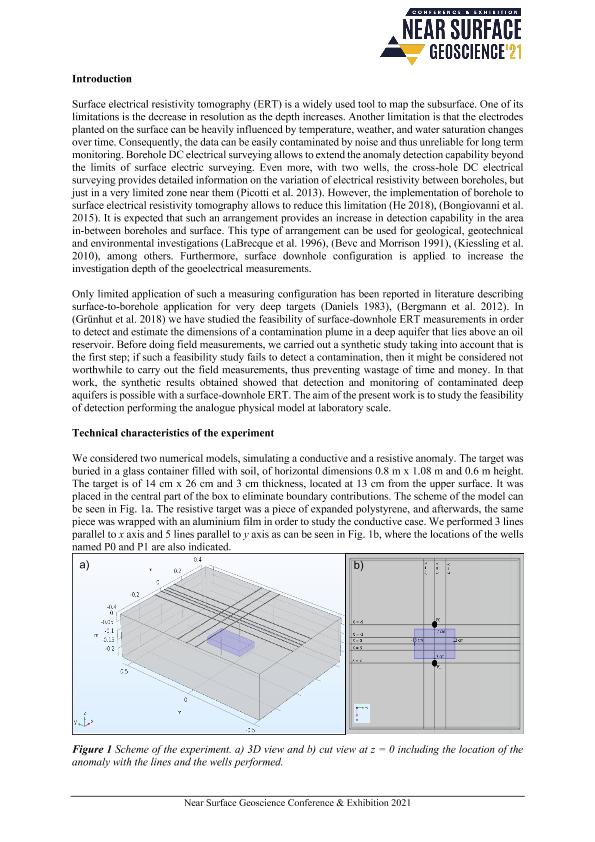Evento
A physical model to study deep contaminated sites: ERT study with surface-downhole electrode configuration
Tipo del evento:
Conferencia
Nombre del evento:
NSG2021 27th European Meeting of Environmental and Engineering Geophysics
Fecha del evento:
29/08/2021
Institución Organizadora:
European Association of Geoscientists & Engineers;
Título del Libro:
Conference Proceedings, Near Surface Geoscience Conference & Exhibition 27th European Meeting of Environmental and Engineering Geophysics
Editorial:
European Association of Geoscientists & Engineers
ISSN:
1028-3668
e-ISSN:
1369-4081
Idioma:
Inglés
Clasificación temática:
Resumen
Surface electrical resistivity tomography (ERT) is a widely used tool to map the subsurface. One of its limitations is the decrease in resolution as the depth increases. Another limitation is that the electrodes planted on the surface can be heavily influenced by temperature, weather, and water saturation changes over time. Consequently, the data can be easily contaminated by noise and thus unreliable for long term monitoring. Borehole DC electrical surveying allows to extend the anomaly detection capability beyond the limits of surface electric surveying. Even more, with two wells, the cross-hole DC electrical surveying provides detailed information on the variation of electrical resistivity between boreholes, but just in a very limited zone near them (Picotti et al. 2013). However, the implementation of borehole to surface electrical resistivity tomography allows to reduce this limitation (He 2018), (Bongiovanni et al. 2015). It is expected that such an arrangement provides an increase in detection capability in the area in-between boreholes and surface. This type of arrangement can be used for geological, geotechnical and environmental investigations (LaBrecque et al. 1996), (Bevc and Morrison 1991), (Kiessling et al. 2010), among others. Furthermore, surface downhole configuration is applied to increase the investigation depth of the geoelectrical measurements. Only limited application of such a measuring configuration has been reported in literature describing surface-to-borehole application for very deep targets (Daniels 1983), (Bergmann et al. 2012). In (Grünhut et al. 2018) we have studied the feasibility of surface-downhole ERT measurements in order to detect and estimate the dimensions of a contamination plume in a deep aquifer that lies above an oil reservoir. Before doing field measurements, we carried out a synthetic study taking into account that is the first step; if such a feasibility study fails to detect a contamination, then it might be considered not worthwhile to carry out the field measurements, thus preventing wastage of time and money. In that work, the synthetic results obtained showed that detection and monitoring of contaminated deep aquifers is possible with a surface-downhole ERT. The aim of the present work is to study the feasibility of detection performing the analogue physical model at laboratory scale.
Palabras clave:
GEOELÉCTRICA
,
ERT
Archivos asociados
Licencia
Identificadores
Colecciones
Eventos(SEDE CENTRAL)
Eventos de SEDE CENTRAL
Eventos de SEDE CENTRAL
Citación
A physical model to study deep contaminated sites: ERT study with surface-downhole electrode configuration; NSG2021 27th European Meeting of Environmental and Engineering Geophysics; Francia; 2021; 1-5
Compartir




